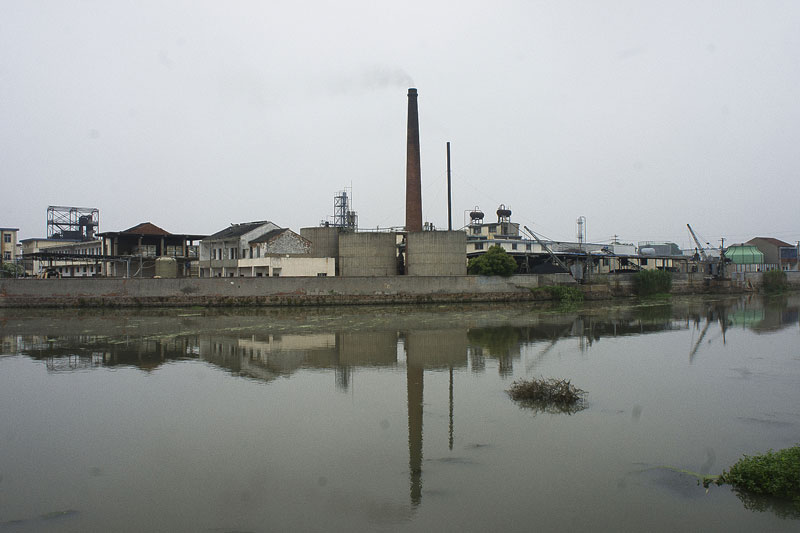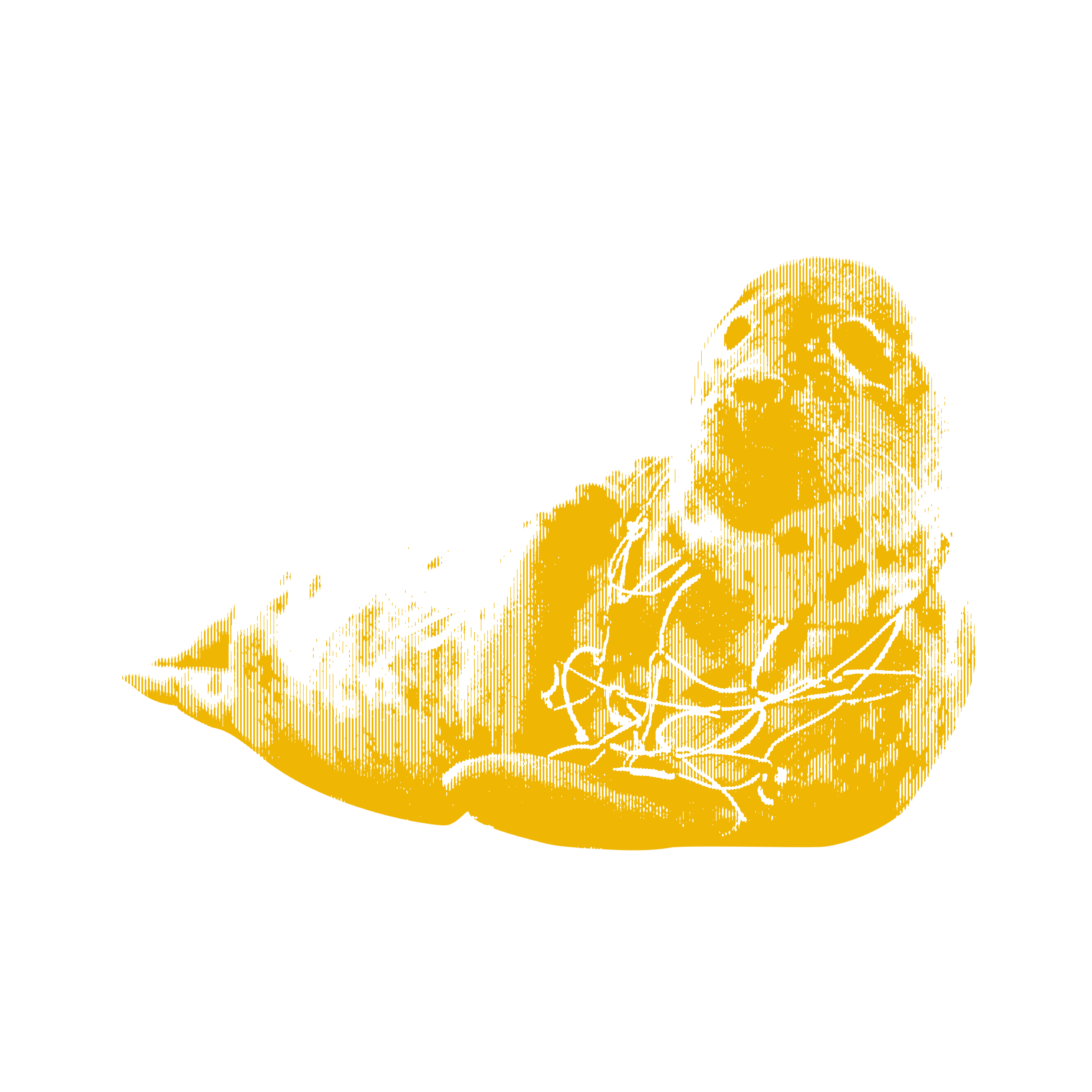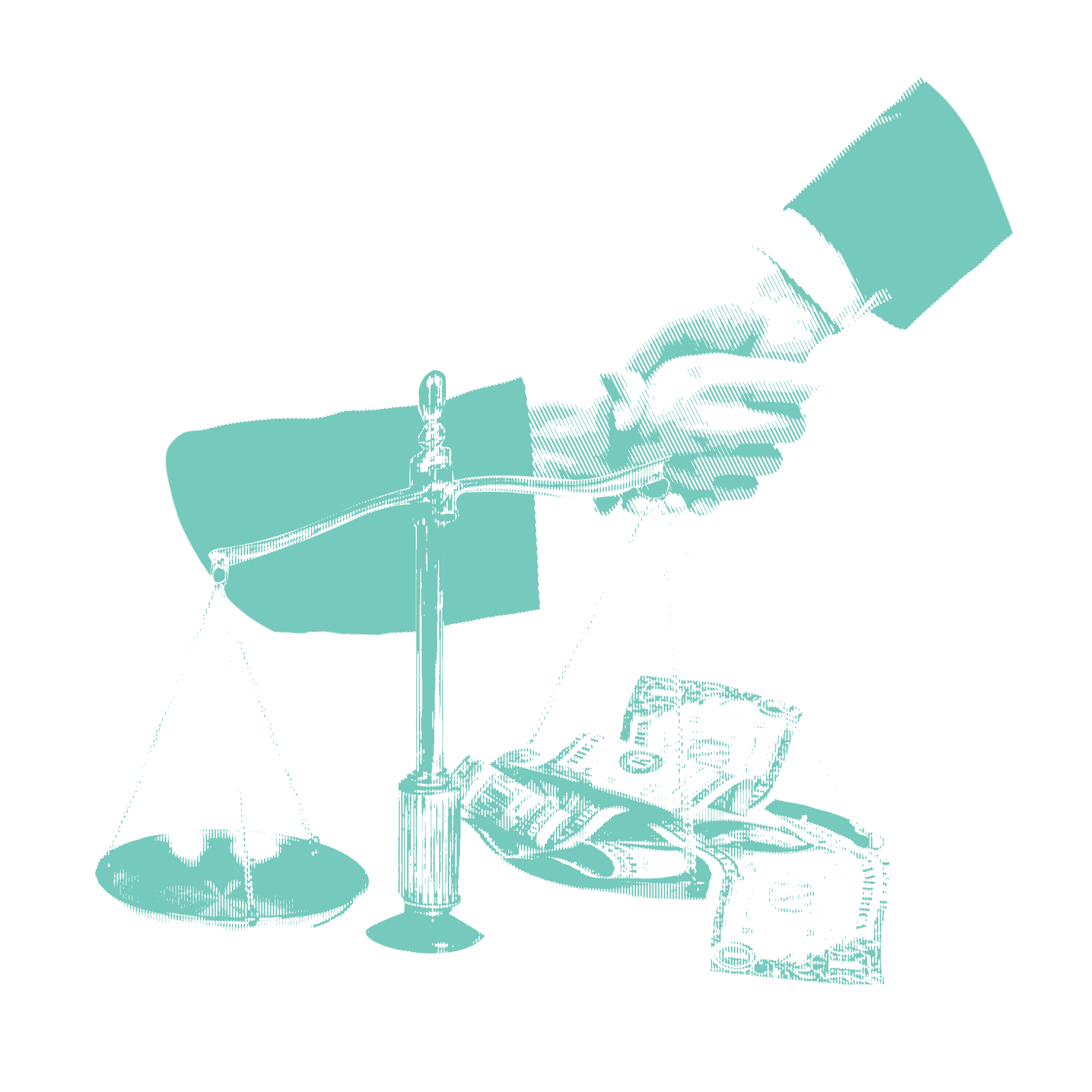When Zhang Junwei's uncle died in February 2012, he was only fifty. In the three years that he had endured the cancer that killed him, surgeons had removed both his rectum and his bladder. "Perhaps he was better off dead," said Zhang, reflecting on his uncle's ordeal. "It was a release." Two years after his uncle's death, Zhang still refuses to name him, afraid that even now, talking about how his uncle lived – and died – could bring trouble down on the family.
Zhang's uncle lived in Fenshui, in Central China's Jiangsu Province, a village of some 7,000 people that straddles a network of waterways on the western shore of Lake Tai, China's third largest freshwater lake. Lake Tai boasts 800 square miles of fresh water, shared between Jiangsu and Zhejiang provinces, and has been celebrated throughout Chinese history for its abundant fish and beautiful limestone landscape.
But as China's industrial boom gathered speed through the 1990s and the early years of the 21st century, a new, metalled road connected the once sleepy village of Fenshui to the major highway networks being built across China. Factories began to cluster along the lakeshore and the village's traditional single-story whitewashed houses, with their signature black-tiled roofs, were steadily replaced with two- and even three- story houses, as factory wages brought a surge of prosperity to Fenshui. Zhang's uncle, like many of his neighbors, had found work in one of those factories.
His illness hit the small family hard. His only son was serving in the army when his father fell ill, and the soldier's wage was too small to cover the medical bills. Zhang's aunt took a factory job herself to support her sick husband, making the difficult choice to leave him unattended during her working day. The cancer was to consume the family's savings entirely, all spent in a fruitless effort to save his life. The patient struggled through his final days at home, getting up to see to his own needs until the day he finally collapsed while fetching a drink of water. He died later that day.
Zhang Junwei (whose name has been changed to protect his identity), believes that the cancer that ended his uncle's life was caused by soil pollution, a subject so sensitive in China that Zhang himself is still afraid to discuss it openly. Zhang has just turned 40 and, like his uncle, has lived all his life in Jiangsu, near the lake. His village of Zhoutie is just five miles from Fenshui and less than 40 miles from the county town of Yixing, in the heart of the Yangtze Delta, today China's biggest regional economy. For more than 1,000 years, Yixing and its surrounding countryside was an important source of grain for China, celebrated in poetry as far back as 960 A.D. for its benign climate and fertile soil, and famous for the manufacture of a dense, brown pottery that is still highly prized in China as the ideal material for teapots.
But today Yixing and the land around it sit in China's new industrial landscape. Since the 1990s, nearly 3,000 factories have been built on the once-beautiful shores of the lake. The chemical boom made Yixing one of China's richest county-level towns, with a GDP that reached $17.06 billion in 2012.
It is also still an agricultural area: the road from Fenshui to Zhoutie runs between flat, regular fields of vegetables, these days more profitable crops than grain for farmers who live close to urban markets. But many local farmers have given up eating the crops they grow. They know that their vegetables are planted in soil polluted with cadmium, lead, and mercury, heavy metals that are dangerous to human health. Zhang confessed that he rarely eats local produce either. "There's too much soil pollution," he said.
Soil pollution has received relatively little public attention in China. Despite the fact that it poses as big a threat to health as the more widely covered air and water pollution, data on soil pollution has been so closely guarded that it has been officially categorized as a "state secret."
Until recently, the Chinese government also resisted media efforts to draw attention to local epidemics of cancer in China's newly industrial areas. It was not until February 2013 that the Ministry of Environmental Protection (MEP) finally admitted that "cancer villages" existed in China, and released a list that included the area around Lake Tai and the villages of Fenshui and Zhoutie. Some civil society experts have estimated that there are 450 cancer villages in China, and they believe the phenomenon is spreading.
The story of the cancer hotspot of Yixing is characteristic: In the rush to develop that engulfed China from the 1990s, local officials were eager to invite factories and chemical plants into the area, and their already weak environmental controls were often disregarded entirely. "Government officials just care about GDP," Zhang complained. "They were happy to welcome any polluting firm." So, for a time, were the villagers who found jobs in the new factories.
The first real signs of the troubles to come were in Lake Tai itself, and were the subject of a long campaign by another resident of Yixing township, the fisherman turned environmentalist, Wu Lihong. In the early 1990s, Wu grew worried about the deterioration of Lake Tai's once famously pure waters. He organized a local environmental monitoring group that he called Defenders of Tai Lake, to collect water samples from the lake and its feeder rivers.
For 16 years, Wu campaigned to draw attention to the lake's declining health, despite harassment from local officials and police, and by appealing to senior government officials, he succeeded in forcing more than 200 factories to close. But his campaign abruptly ended on April 13, 2007, when he was arrested and then sentenced to a four-year prison term on charges of extortion and blackmail. The following month, the Ministry of Environmental Protection named Yixing a "National Model City for Environmental Protection." Five days later, a toxic algae bloom turned the waters of Lake Tai into foul-smelling green sludge.
That episode, in the high summer of 2007, attracted international attention and was a major embarrassment for the national as well as the provincial government. According to the Lake Tai Basin Authority, more than 30 million people draw their drinking water from the basin's 53 water sources. A Zhoutie local official admitted to the government newspaper People's Daily that the algae bloom had caused a "water supply crisis," and said the lake's water "looked like soy sauce." The authorities finally acted.
At the end of 2006, Yixing had been home to 1,188 firms producing chemicals. By October 2013, after six years of "rectification," 583 had been closed down, merged or reopened as other types of businesses, as were 104 chemical plants in Zhoutie and 57 in neighboring Taihua township. In late 2013, Yixing started a new round of chemical industry cleanup, with plans to deal with an additional 52 chemical firms over the next two years.
It all came too late for the campaigner Wu Lihong. He has now completed his prison term and his wife and daughter have moved overseas, but Wu himself remains subject to restrictions, including a ban on talking to the media. His harsh treatment is a reminder to other villagers that environmental activism carries a high cost.
Pollution remains a highly sensitive subject in the district. Most interviewees were too frightened to give their names, worried about how local officials might react. Others complained that official secrecy about pollution meant that they could not discover what dangers Zhoutie's toxic legacy might pose to their own health and that of their families. Zhang Junwei recalled that, when the pollution was at its worst, even people's sweat was discolored. "Several of my relatives died from cancer very young," he said.
Although the local government has now closed the worst of the factories, the pollutants those factories had released in their wastewater or sludge ended up in the soil, and the toxic waste from those polluting years continues to threaten the health of the people of the area and beyond.
Zhang Junwei and villagers like him are well aware that cancer rates in their district have risen, and they suspect that pollution was the cause. They say the number of cancer victims started to increase ten years ago, when local farmers began to fall ill and die. Their suspicions were well founded: When crops are grown in soil contaminated with cadmium or other heavy metals, the grain absorbs the toxins. But even today, despite this awareness of what pollution can do, local farmers have little choice but to continue to plant. These are families that reaped no direct benefit from industrialization and still have few alternative sources of income. The poorest still eat locally produced food, knowing it is contaminated.
Establishing a clear connection, however, between pollution and cancer is scientifically challenging. At Hohai University, in Jiangsu Province, Chen Ajiang, a sociologist who heads the university's Institute of the Environment and Sociology, admitted that the link between pollution and cancer is extremely complex, and it is difficult to pin down cause and effect.
In 2007, Professor Chen won a government grant to study the interaction of human and water environments in the basins of Lake Tai and the Huai River. For five years, he and his four researchers carried out field studies in the provinces of Henan, Jiangsu, Zhejiang, Jiangxi and Guangdong, looking for evidence of the health impacts of water pollution. Professor Chen believed that pollution-related illness was damaging economic development, keeping villagers in poverty, or driving them away from their native villages altogether. Although he admits that the medical world has not yet identified an undisputed link between pollution and cancer in the villages he studied, his team established beyond doubt that cancer villages exist and that the lives of those who live in them are severely impacted.
The pollution that chemical factories released in gas and sludge, and in the wastewater they discharged into Lake Tai and other local waterways, has now accumulated in the surrounding soil, but the government has been reluctant to acknowledge the scale of the problem. In April, 2013, the Ministry of Housing and Urban-Rural Development awarded Zhoutie a "Habitat Environment Prize," an award, like the accolade given to Xining, that seems out of tune with the real state of Zhoutie's environment.
In April 2013, the Jiangsu Geological Survey published part of a report that showed that heavy metal pollution in the Wuxi, Suzhou, and Changzhou areas Rice from Dingshu has long been in breach of safety limits on the amount of cadmium it contains. The report revealed that between 2005 and 2011 increasing levels of cadmium were found at 37.5 percent of the sites sampled, with average increases of 0.03 milligrams (mg) of cadmium per kilogram kg of soil. At its highest, the annual average increase was 0.2 mg.
Continuous monitoring revealed an escalating pattern of pollution. In one unspecified area, researchers reported, cadmium levels higher than 0.4 mg per kilogram of soil were found only in relatively isolated patches in the land surrounding industrial development. But by 2012, large stretches of nearby farmland were polluted to the same levels, and rice and wheat produced in the area were contaminated.
It also described one case — later identified as the township of Dingshu, 18 miles to the southwest of Zhoutie — where, due to a cluster of township enterprises that were dumping their waste, cadmium levels in the river silt had reached 1500 mg per kg, and that rice produced on nearby land was contaminated with cadmium to levels of more than 0.5 mg per kg. China's food safety standards rule that rice can contain no more than 0.2 mg/kg of cadmium, and the international limit is 0.4 mg/kg. Rice from Dingshu has long been in breach of those limits.
Dingshu is the centre of Yixing's ceramics industry, home to many glazed tile factories, teapot factories, and clay workshops. Yixing's stoneware is an important source of revenue, but the factories have also badly damaged the local environment and contribute to the area's soil pollution. Yixing launched a crackdown on ceramic factories in early 2011, but by June 2013 only 300 had been fully shut down.
The area's problems illustrate the high price China is paying for 30 years of rapid economic development and the risks China's increasingly serious soil pollution poses to its food. Official estimates say that China produces 12 million tons of heavy-metal-contaminated grain a year, with an economic cost of more than $3.2 billion.
China's official approach to soil pollution has been characterized by secrecy and obfuscation. Even now, a picture of the scale and severity of the problem must be pieced together from disparate reports.
In 2010, for instance, a report on soil protection policy from the international expert body, the China Council for International Cooperation on Environment and Development (CCICED), warned that overall trends in China's soil pollution gave no cause for optimism. Quoting China's official 1997 Report on the State of the Environment in China, it characterized the pollution of China's arable land as "rather severe," with pollution affecting an estimated 10 million hectares of land. By the year 2000, according to that year's report on the state of the environment, 36,000 of the 300,000 hectares of basic farmland monitored for harmful heavy metals were found to be more than 12 percent above the standard.
CCICED's researchers were no more optimistic about China's system of supervision and management of soil, finding that investment in soil pollution prevention and control was too low. They stressed that soil pollution reduces the quality of crops and recommended legislation to protect the soil and to control pollution, as well as improvement in China's environmental soil standards.
There are now signs that gravity of the soil pollution problem is belatedly forcing the Chinese government to begin to deal with a problem that has accumulated over many decades, and to reconsider its policy of pursuing economic growth at the expense of the environment. In July 2007, the Ministry of Land and the National Bureau of Statistics launched a nationwide soil survey. It was completed in 2009, but partial results were not published until December 2013. In April 2014, the government released partial results of a second soil pollution survey, conducted from April 2005 to December 2013, and covering 243 square miles of farmland. The survey reported that about 16.1 percent of China's soil and about 19.4 percent of farmland were contaminated.
China has 135 million hectares (334 million acres) of arable land in total, but the amount of available high quality arable land has been dropping due to advancing urbanization and pollution. According to the recently released data, the government classifies more than 3 million hectares of arable land as moderately polluted. How much of that is contaminated with heavy metals is still not clear, though in 2011, Wang Bentai, then chief engineer of the State Environmental Protection Agency (now the Ministry of Environmental Protection) put lead, zinc and other heavy metal pollution at 10 percent of China's arable land.
By official estimates, pollution cuts China's harvests by 10 billion kg every year. In addition, official estimates say China produces 12 million tons of heavy-metal-contaminated grain a year, resulting in annual direct economic losses of over $3.2 billion.
Rising public concern about the impacts of pollution have begun to force a change in government attitudes, but changes at the top can take some time to percolate down to lower levels of government. In November 2013, delegates to the Third Plenary Session of the 18th Chinese Communist Party Central Committee – an important party meeting — adopted a key strategy document that set out the government's priorities for the immediate future.
The document, prosaically entitled Decision on Major Issues Concerning Comprehensively Deepening Reforms, promised that environmental protection would be given more importance in the performance evaluation of local and national officials, and that local officials would be considered directly responsible for pollution. Economic growth would no longer guarantee promotion for local officials. The government also promises to put in place the legislation and powers to allow polluters to be heavily punished, a promise that began to take shape in the new environmental protection law, approved in April 2014, which removed the caps that had kept fines for polluters low.
However, Zhuang Guotai, the head of the MEP's Department of Nature and Ecology Conservation, has said that cleaning up soil pollution is a difficult and lengthy process that will require huge investment. In some cases, he explained, the pollution the ministry had identified in soil samples could be traced back decades: pollution from the pesticide benzene hexachloride, for instance, a substance banned in the 1980s, was still in evidence.
Mr. Zhuang promised that an action plan to deal with soil pollution will pull together both central and local government and businesses, using market mechanisms to promote soil restoration, with rewards systems in place to encourage public participation. A new law on soil pollution is also promised. But soil remediation is expensive and complex, and there are no easy answers to a pollution nightmare that has brought early death to the afflicted villages, reduced harvests, and rendered much of China's homegrown food toxic.
This article was also published by China Dialogue on June 30, 2014.























